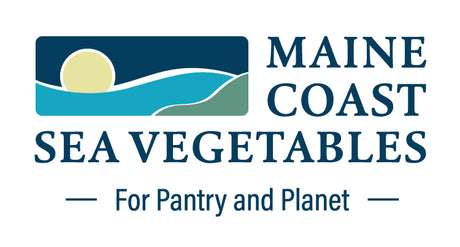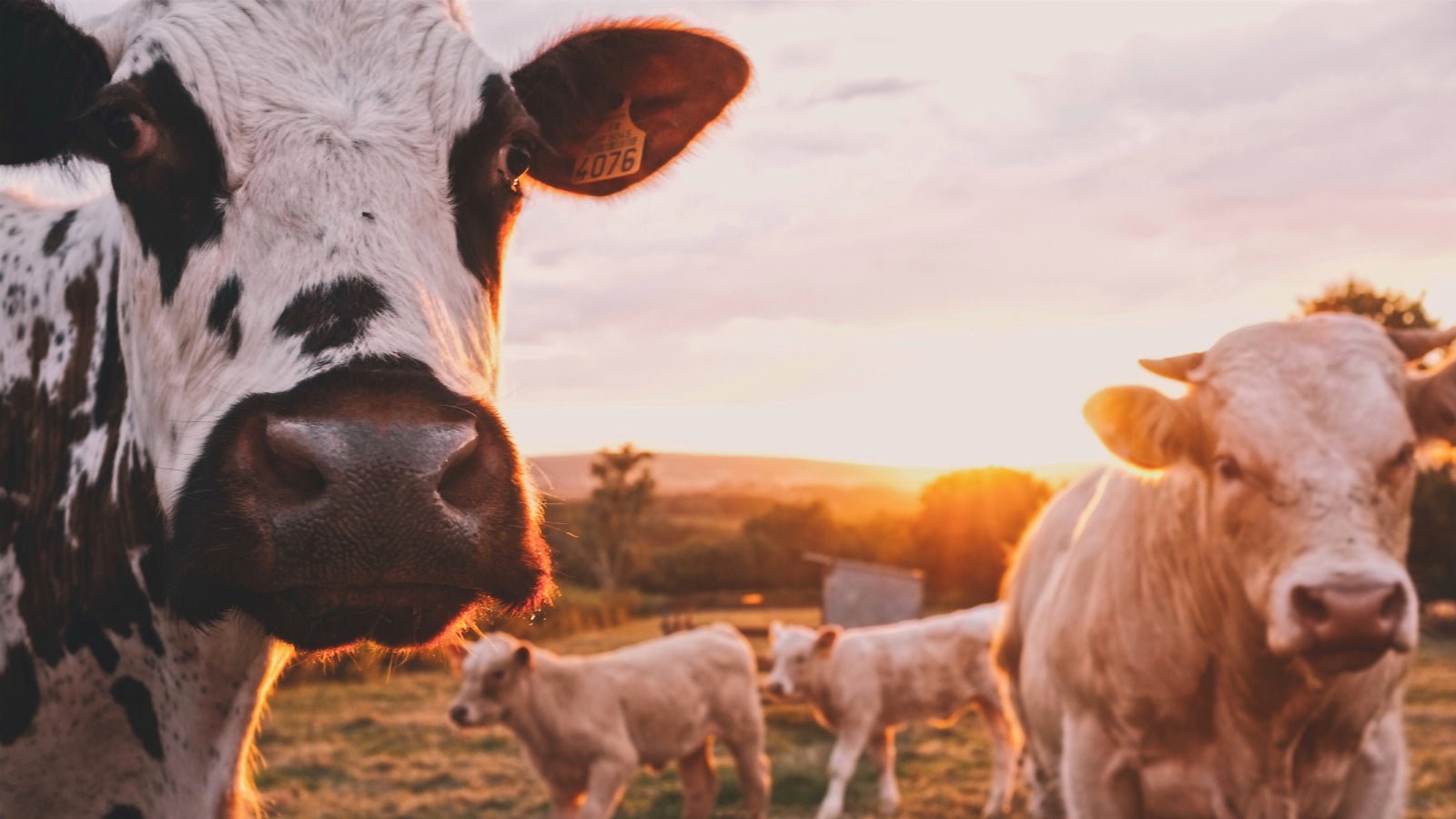Years ago, while working on a cod fishing boat off the remote Aleutian Islands of Alaska, I was treated to the unexpected sight of a herd of cattle on the beach just above the surf. Our boat was seeking shelter from a storm and we were near enough to shore that I could hear their melancholy lowing on the wind. Just off shore, a few Stellar sea lions barked seemingly in response. It was surreal and otherworldly watching these two very different mammals interact, one of the lands and one of the seas.

A bull roams Wosnesenski Island in 2006. Steve Ebbert / USFWS (From Alaska Dispatch News, Apr. 29, 2016)
I watched through binoculars as we sheltered in the cove. The cattle were long-haired, bony, and wild looking, and they were grazing on something on the beach. When one of the cows raised its head, I saw what looked like strands of seaweed dangling from its mouth. I remember wondering how cattle got onto this remote island in the first place, far from any ranch or human settlement, and why they were eating seaweed. Little did I know at the time that I would someday circle back to this subject.
I have since learned that cattle were deliberately introduced to Chirikof Island and several other Aleutian Islands by Russian settlers in the early 1800’s. The islands form natural fences and they’re often lush with grassland. According to one cattle ranching expert, some areas of the Aleutian Islands produce up to 6,000 pounds of forage grasses per acre. By comparison, some of Idaho’s most productive range land produces about 1,500 pounds per acre. Although the original Russian settlers have long departed, their cattle survived to become feral. A few herds are still managed by ranchers; these remote islands with their lush grasses are perfect conditions to raise free range, organic beef.
The cattle also like to munch on kelp, which grows abundantly along the Aleutian Islands. It turns out they are not unusual in this respect. Coastal Europeans have a long tradition of gathering Alaria, rockweed, bladderwrack, and other kelp species from the beach to feed to cattle and other livestock. Icelanders would wash freshly harvested Alaria and then store it in trenches with a layer of stones or oak planks on top to serve as a winter feed supplement for dairy cows. Even throughout the year, kelp was added at about 5% to 10% in poultry feed, and at somewhat higher levels to feed cattle, horses, pigs, and sheep. This didn’t affect the flavor or odor of dairy milk but it likely added iodine and, in that fashion, contributed to healthy humans.
The uninhabited island of Swona, which is part of the Orkney Islands, an archipelago in the Northern Isles of Scotland, is also home to an abandoned herd of domesticated cattle gone wild. The herd was left behind by the last inhabitants of Swona in 1974 and today they number about 20 animals. Just like their Aleutian Island cousins, they’ve been seen to eat seaweed, but another Orkney Island ruminant is even more famous for this behavior. Cattle and sheep were first introduced to the Orkneys about 3,500 BC during the latter Neolithic period, and on some of the islands, particularly North Ronaldsay, the sheep subsist almost entirely on kelp. This sheep population is of great research interest for their unusual rumen microbiology and their capacity to metabolize salt and arsenic naturally found in kelp without any harm. Dulse is said to be one of their favorite species, which comes as no surprise since so many MCSV customers also love it!
Recently, a new twist on this story has emerged, and one that could help fight global warming caused by methane. Although carbon dioxide is the most abundant and longest lasting of the so-called greenhouse gasses, methane is about 28 times more potent. In recognition of methane’s role in climate change, President Biden announced in 2021 that the US was launching a “Global Methane Pledge” alongside the European Union to slash methane emissions by 30%. As it turns out, feeding seaweed to cattle could help in this effort.
Methane comes from fossil fuels and also from animals, especially ruminants such as cattle. They release it in their manure and from their belches as a natural byproduct of the bacterial digestion of plant cellulose in their rumens. A single cow can release between 70 and 120 kg of methane per year, and with about 1.5 billion cattle on the planet, that’s a lot of methane! According to the United Nations Food and Agriculture Organization (FAO), livestock are responsible for about 14.5 percent of all global greenhouse gas emissions.
The methane released from cattle is known as biogenic methane and it’s part of the biogenic carbon cycle, where plants absorb carbon from the atmosphere during photosynthesis and then cycle it back into the atmosphere when the plant dies and decays or is eaten and digested by animals. The interesting part of this process is that, if we could somehow stop the release of methane during digestion, we would not only prevent it from warming the atmosphere, it would also have a net cooling effect because methane degrades in the atmosphere into carbon. This web page from UC Davis better describes this scenario with the help of graphics.
This is where seaweed enters the picture. Researchers from UC Davis, Australia, and elsewhere have found that Asparagopsis spp., a type of red seaweed originally found in tropical and sub-tropical waters, reduces methane production when it’s included in cattle feed as a supplement. Two closely related Asparagopsis species are under investigation: A. taxiformis and A. armata. While A. taxiformis is still widely distributed only in warm southern seas, A. armata is cold tolerant and it’s now found as far north as Ireland, where it’s considered an invasive species.

A.taxiformis in its natural environment
Photo by Jean-Pascal Quod - The uploader on Wikimedia Commons received this from the author/copyright holder., CC BY-SA 3.0 (https://commons.wikimedia.org/w/index.php?curid=33442927)
Other antimethanogenic feed supplements have been tried in the past, but they all adversely affected feed efficiency and meat and dairy production while showing only a modest effect on methane production. Asparagopsis can significantly lower methane emissions while having just a moderate to no effect on these production measures. Its activity is largely due to bromoform compounds produced by the algae. In a recently published paper, researchers from UC Davis, Stanford, and Australia found that A. taxiformis added at just 0.5% to dairy cow’s diet reduced methane emissions by about 25% with no discernable negative effects. An inclusion of 1% reduced methane emissions by close to 60%, though feed intake and milk production were also affected. The scientists conclude that it could be possible to reduce methane emissions from cattle and potentially other livestock by 50% without affecting production.
Entrepreneurs and other seaweed scientists have taken note of these findings. Here in Maine, Dr. Nichole Price, Senior Research Scientist at the Bigelow Laboratory for Ocean Sciences, is leading a $10 million project funded by the USDA to bolster research into algae-based animal feed supplements for environmental sustainability. This award follows closely on the heels of a $5 million grant to the same research team from the Shelby Cullom Davis Charitable Fund to address the largest roadblock to this approach: scalability.
To have a meaningful impact, algal feed supplements would have to be produced at enormous scale for a reasonable cost. Harvesting wild Asparagopsis beds at the level to meet the need would be unsustainable, even if there was enough available. One solution under investigation by Dr. Price and her team is to see if other seaweed species or combinations of algae, including microalgae, could be used to the same effect. The Bigelow Lab is a good fit for this mission because it also acts as a repository of algal strains from all over the globe. Ultimately, though, whether it’s Asparagopsis alone or some combination of other algae, there has to be a supply chain of producers, processors, distributors, and farmers willing to use it. This is where entrepreneurship comes in.
Asparagopsis has been prized by people as food and medicine for centuries. In Hawaii, A. taxiformis is one of the most popular types of limu, a Polynesian term for edible sea vegetables, and it’s a traditional ingredient in poke, a raw fish dish. Asparagopsis was used as a nutritious livestock feed ingredient long before its antimethanogenic properties were known, and more recently as a feed additive for farmed salmon and other fish. So far though, Asparagopsis supply has been met through wild harvest, but many believe recent burgeoning demand with projections for much more can only be met through mariculture at sea or in tanks on land.
Proponents of sea-based mariculture say growing it in the ocean is more cost effective, scalable, and efficient, but tank mariculture enthusiasts point out that growing it in tanks means it can be grown in more locations and with more control. Greener Grazing is a project led by an international team of scientists, aquaculturists, economists, and supply chain experts to grow Asparagopsis in the ocean. Symbrosia and Sea Forest are among other new companies working to develop Asparagopsis mariculture, along with Blue Ocean Barns, which is “focused on scaling up proprietary production technology at strategic sites around the United States”.
These are welcome developments in the fight to reduce greenhouse gas emissions, though producing enough seaweed to feed the world’s billion plus cattle is a daunting task. According to one estimate, feeding just 10% of Australia’s cattle alone would require 300,000 tonnes of Asparagopsis each year, demanding over 6,000 hectares of seaweed farms. Farming Asparagopsis at this scale wouldn’t necessarily be a bad thing, though. Seaweed mariculture is one of the most low-impact forms of agriculture there is; in fact, it confers multiple benefits to the ocean.
In the meantime, we have a simple suggestion for those of you who want to take action now: eat less beef and more seaweed! Visit our sea vegetable shop to discover over 30 edible sea vegetable products and our recipe page for ideas on how to incorporate them into your diet. Good for you, good for the planet!



